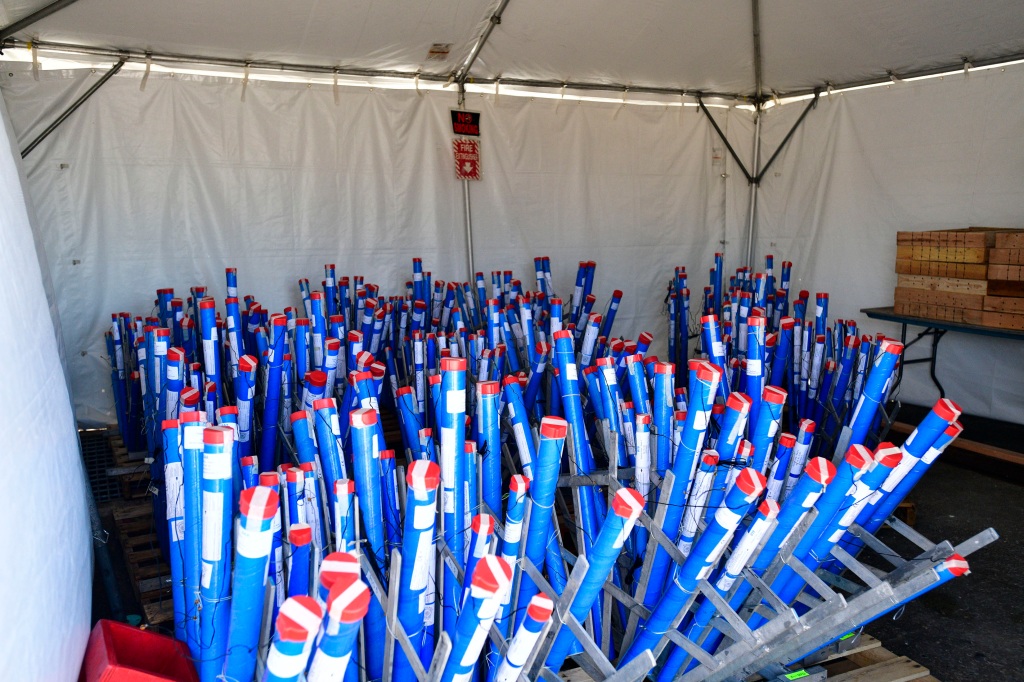July 4 fireworks drastically drop US air quality: meteorologists
What would the Fourth of July be without fireworks? It turns out much healthier. Studies across the US have shown a drastic drop in air quality at the first rocket’s red glare and bomb bursting in air.
“If you happen to be downwind from a big fireworks event it is very hazardous,” Paul Walsh, Meteorologist and General Manager of BreezoMeter.com. “Fireworks also release fine particulate matter, which includes something called heavy metals…, which is really bad to breathe that in.”
Dangerous air quality levels stick around throughout the morning into the afternoon of the 5th. For most of the US, the wind calms down at night as the sun sets. Then the earth starts radiating the heat it absorbed from the sun. The warm air (less dense than cold air) rises into the atmosphere as the cold denser air settles to the surface.
The cold air traps pollutants like smoke and heavy metal particulates at the surface, where we breathe it in. This is called a temperature inversion. The upper-level warm air is like a lid on our atmospheric pot, keeping everything stable and still. The atmosphere needs wind to mix up the stagnant air or sunshine to heat the ground to get warm thermals rising to improve air quality.
“Last year in New York City, during July 4th, just after the fireworks, it was the third most polluted city in the world,” Walsh quoted data published by IQAir. “And in LA, they had hazardous airborne conditions that lasted for quite a while for a large area around Los Angeles. Just even sparklers release toxic gases.”
Air quality officials in the greater Los Angeles area already issued warnings for the 4th and 5th.
“Breathing of fine particulate matter can lead to a wide variety of cardiovascular and respiratory health effects such as heart attacks, asthma aggravation, decreased lung function, coughing, or difficulty breathing and may lead to premature death in people with heart or lung disease,” the South Coast Air Quality Management District stated in a press release.
New York City, a city with relatively good air quality, on average scores 3,628 out of 6,475 cities, as reported by IQAir.com. One is the most polluted and 6,475 is the cleanest city. So, on a regular basis, New York fares better than half the cities around the world, except on the Fourth of July.
The American Pyrotechnics Association reports that the US set off 50.6 million pounds of professional fireworks and 102 million pounds of consumer/backyard fireworks in 2020. Much of that is caught in the air we breathe.
The pyrotechnics are largely made out of gunpowder, chemical colorants, metals, paper and plastics. The firework explodes and releases gasses and fine particulates into the air with smoke, color and noise. Some of the gas and particulates settles back to the surface, or transported on the wind to another town.
Copper, lead, sulfur, cadmium, aluminum, manganese, arsenic, iron dust, strontium, barium, antimony and benzene toluene are just some of the dangerous metals and salts that fireworks release.

Researchers in India discovered that airborne toxins like particulate matter, sulfur dioxide, nitrogen dioxide and ozone stayed in the air for five days after Diwali Festival fireworks. That level was over 2,800% above the limit set by the World Health Organization.
A Minneapolis study showed that particles that can be inhaled and accumulate in lungs or bloodstream increased by 180-600% on the 4th compared to levels of those on the evening of the 3rd. Carbon monoxide levels increased by 32%.
A 1975 study published in the National Library of Medicine found a 113% increase in respiratory illness treatments during fireworks.
Protect yourself and your family
Local air quality officials and the CDC have several recommendations to stay away from the pollution:
- Sit upwind for the fireworks staging area. (The breeze blows smoke away from you.)
- Watch at least 500 feet away from the show.
- Try wearing an N-95 or better, an N-99 mask, if you are at the show.
- Young children, older Americans and anyone with an underlying respiratory illness should consider enjoying the show on TV or through a closed window. Replace the HVAC filter before the Fourth. Run air purifiers on high.
- Keep your eye on your local air quality levels.
Read the full article Here


